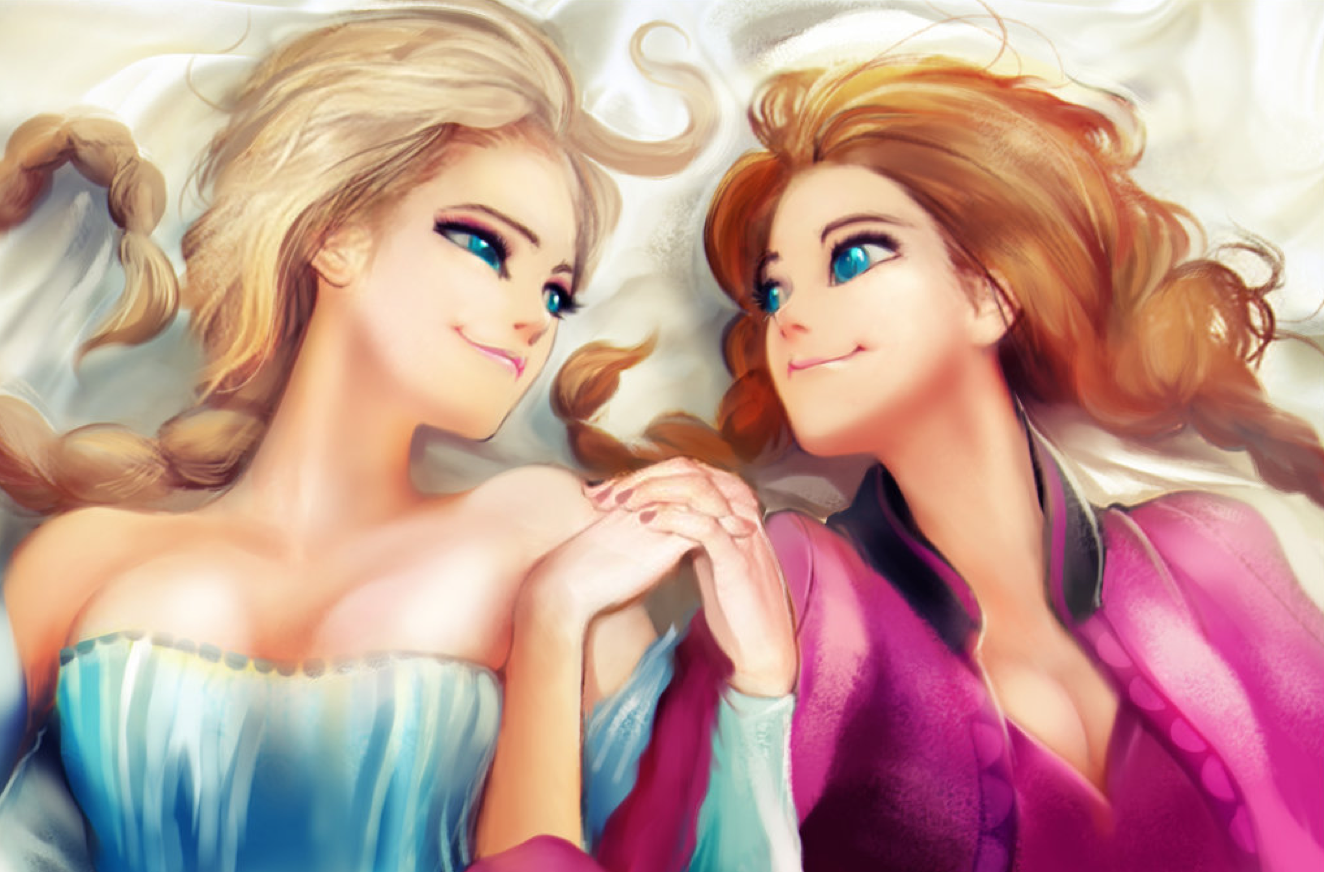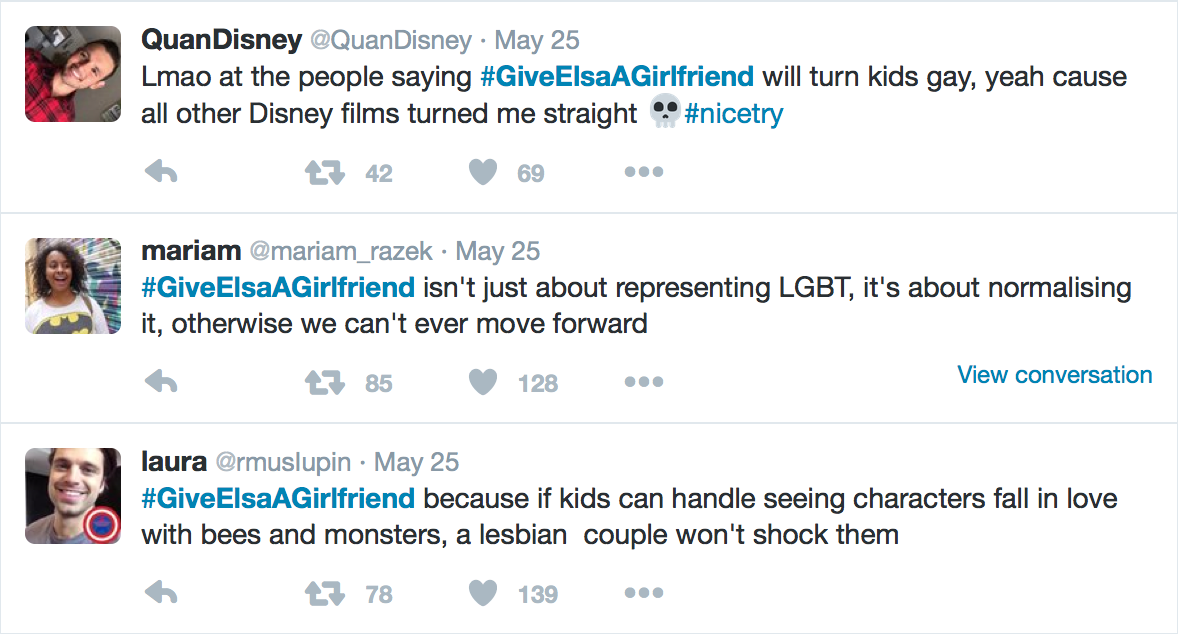Why Elsa Really DOES Need A Girlfriend
By Matilda Douglas-Henry
The landscape of Disney films underwent an irrevocable shift when Frozen was released in 2013.
I remember not being particularly keen to see it upon its release. Give me an animation film where savvy anthropomorphism is involved and I’m sold – but I’ve never been one to vibe the whole Disney Princess fad. I was much more prone to re-enacting Mufasa’s tragic plight from The Lion King as a child than waltz around the lounge room as Belle, looking for my Beast.
A couple of my queer friends saw it in the cinema and insisted that I would love it – providing little clarity or reason, they simply said, “you just need to see Frozen.” Indeed, I did, and indeed, I loved it. The film is inherently subversive – alluding to, yet perpetually satirising, the tired heteronormative tropes that Disney has become so associated with. The narrative uses the icy Scandinavian setting as a platform for radical progressive thought (as far as Disney princess movies go). The relationship between the two female protagonists – children of royalty, Anna and Elsa – is the love story. But it’s the tortured queen Elsa’s individual character development that really packs a punch.

Frozen is structurally fascinating, especially for a children’s film. The main characters part ways early, with Elsa fleeing her duties as queen and Anna going to find her. Rather than portray Elsa as sad, alone and pining for love, she wholeheartedly embraces her powers as an Ice Queen now that she’s left to her own devices (for those who are criminally unaware, Elsa freezes everything she touches; a power she’s been forced to hide her entire life after she near-fatally injured Anna). She belts out the epic “Let It Go”, and ever since no one’s life has been the same. The song is one of the most familiar and catchy tunes of the past decade, and has also earned its well-deserved stripes as a queer anthem.
Elsa’s emotional trajectory is an allegory for coming out, which reaches its nerve-tingling climax with “Let It Go”. Yet there’s more evidence to suggest Elsa errs on the side of gay, with little hints sprinkled throughout the film like very cold, queer confetti. She acts appalled and wonderfully disgusted when, at the beginning of the film, Anna spontaneously decides to marry a prince, and makes it very clear she has no intentions to herself. Many of the other songs allude to Elsa’s queerness too – “conceal don’t feel” is a heartbreaking lyric that so accurately evokes the stifling repression those who are in the closet endure.
Yet here lies the issue. With Frozen, the queer community have been able to seek solace in a Disney film that is significantly more radical than its predecessors. But there are only so many implications, allusions and allegories that we can look out for. Even the film’s director Jennifer Lee made a statement that all Elsa’s connections to queerness were purely coincidental. So what would it look like if Disney went all in, and made a film with explicitly queer characters?
Unsurprisingly, the sequel to Frozen got the green light, and the hashtag #giveElsaagirlfriend starting trending almost immediately on Twitter. A few days ago, the inimitable, the iconic Idina Menzel (the voice of Elsa) publicly backed the campaign. “I think it’s great,” she said. And it would be. It is certainly a risk – the squeaky clean, cookie-cutter formula of Disney films offers universal accessibility (AKA big bank) to all walks of life. But imagine how revolutionary it would be if Frozen 2 was used to fundamentally, and explicitly, change the conservative and heteronormative voice of Disney princess animation?

It would literally change lives.
So I’ll use this platform momentarily as a soapbox – to implore Disney to make a difference, and at least consider the validity of the #giveElsaagirlfriend campaign. If a Disney film that merely hinted at queerness made 1.3 billion US dollars at the box office, a princess tale with a full-blown lesbian could make the box office implode.

